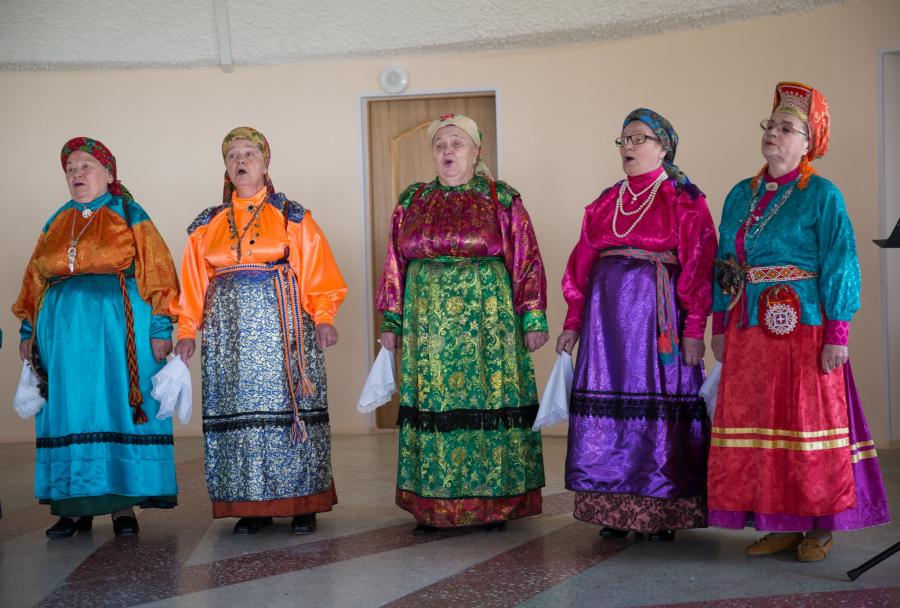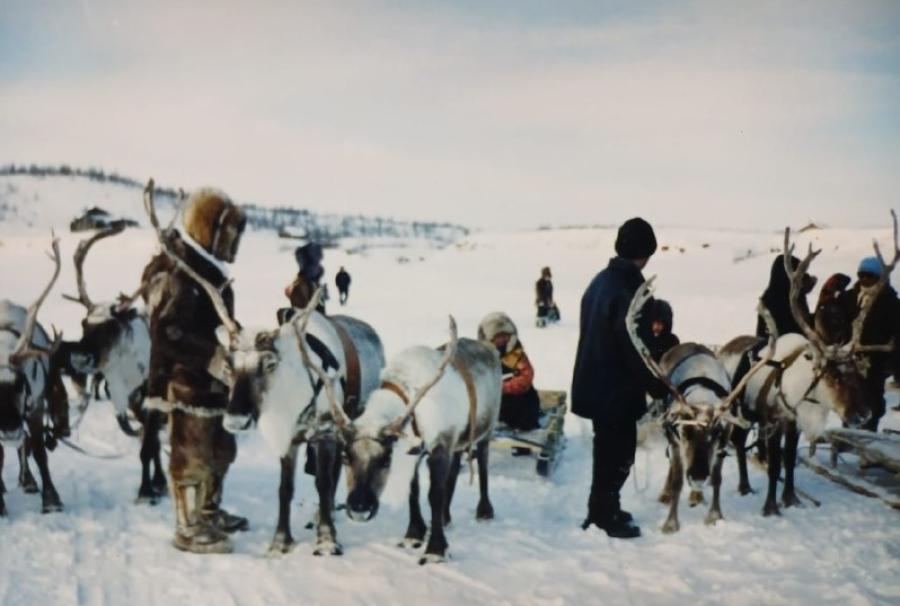In the mountainous regions of southern Siberia, an ancient people is losing ground. The Shor, an indigenous group with Turkic roots in the south Kemerovo Region of Siberia, are trying to hold on to their culture in spite of a declining population and a number of social, economic, and health challenges that threaten to push them to extinction. Like many indigenous populations around the world, they can recount a history of invasion, exploitation, and assimilation into the dominant culture. But they are battling to save their culture and contribute to the global indigenous community.
The Shor have existed as a distinct population since as far back as the sixth century. When they were encountered by Russians in 1607, they were given the name Kuznetsk Tatars (the blacksmith Tatars) because they knew how to smelt iron and make iron objects. The Shor hunted and fished, harvested products from the forest, and engaged in a basic type of agriculture. Shamanism provided the core of their spiritual worldview. They described the universe as consisting of three worlds: Ulgen chef (upper), Orty cher (middle), and Aina chef (lower). They believed that humans share the middle world with numerous spirit-beings of nature -- those of the taiga, mountains, rivers, and lakes. The Shor lived in connection with the natural world.
Their identity as an intact indigenous people, however, started slipping soon after the Russians "found" them. In 1618, Cossaks built the Kuznetsk Fortress on the Tom River, at the site of present-day Novokuznetsk (currently the industrial center of the Kemerovo Region). In the 19(th) century, Shor religious beliefs came under attack. Russian missionaries established themselves in the Shor homeland and began efforts to convert them. Christianity was forcibly imposed: shamans were persecuted and people were told that they would be exempt from taxes if they agreed to embrace Christianity, or were threatened with savage punishment if they did not.
The Shor's land also caught the interest of outsiders. When the Bolsheviks came to power in Russia, they began to extract the Shor region's rich natural resources. Gold, iron, coal, marble, granite, manganese, phosphorite, wood, fur: all were tempting riches waiting to be claimed by the new Bolshevik state.
A period of reprieve, however brief, was awarded to the Shor in the early part of the 20(th) century. On April 12, 1926, a decree of the All-Russia Central Executive Committee declared Shor self-determination legal. The decree established the Mountainous Shor National Region as part of the Kuznetsk District, Siberian Krai. The total area of the newly formed region -- home to 23,000 people, about 16,000 of whom were Shor -- was 30,000 square kilometers.
During Stalin's repression in the 1930s, however, almost all educated people were accused of organizing a counter-revolutionary, nationalistic conspiracy, and were killed. At the end of that decade, in accordance with the decree of the RSFSR (Russian Soviet Federated Socialist Republic) Supreme Soviet Presidium of June 22, 1939, the Mountainous Shor National Region was abolished. Regional newspapers were forced to shut down. Shor manuals and books were destroyed, and teaching at schools was required to be in Russian.
Recognition and Survival
Today, evolving democratic processes in Russia have made it possible for the Shor to begin a movement to restore their culture and traditions. They are facing a number of obstacles, however. Their numbers are declining: they suffer from a variety of diseases, and have a high death rate and low birth rate. In accordance with the Russian justice system, prisoners are sent to Shor villages to serve out hard labor sentences while living among the local people. Contact with prisoners has had an overall negative impact on the life of the local population; the level of crime has sharply increased, and such social problems as alcoholism and drug addiction have taken hold and spread.
There are economic and environmental concerns as well. The Shor receive no financial benefits from the extraction from their homeland of coal, iron, gold, and timber. These activities benefit companies that strip Shor sacred land of resources; the land is disrupted, trees are felled, and religious values are considered inconsequential.
The imposed European culture -- which is destroying their heritage -- is another grave concern. Out of 12,000 Shor surviving today, only 1,000 can speak their native language. Their mythology, folklore, and songs, passed from generation to generation, are being lost as ever fewer people remember the ancient narratives and habits of their ancestors.
Today, nationalistic moods are widespread in Russia, and the needs and wishes of indigenous peoples go largely unheeded. Neither the government nor general Russian society offer support for the Shor. There is, however, increasing interest on the part of individual citizens to help preserve the culture of this ancient people.
Lyubov Arbachakova, the only known specialist in Shor folklore, is carrying out vital work to preserve Shor ancestral stories. She travels throughout Shor, recording narratives and translating them into Russian. Lyubov meets with Shor shamans who retain the traditional ways in spite of Russian cultural and religious domination. She has generated a rich collection of unique material -- enough to fill several books. And Lyubov makes a unique contribution to keeping the Shor stories alive: she paints what she has learned from the Shor epics -- their heroes and beauties, unique landscapes, and fantastic animals.
Unfortunately, funds to continue recording Shorian folklore and shamanism, make them available to the public, and permanently archive them, are meager. The national government, while trying to overcome the country's crises, cannot provide the support needed to preserve indigenous cultures. The situation is certainly dire -- and financial support is crucial to keeping Shor traditions from becoming extinct -- but the Shor have stamina and resiliency and have withstood previous threats. My wife, Lyubov, and I are counting on those qualities, along with the support of the international community, to ensure that the Shor do not disappear but instead make a unique contribution to the global indigenous community.
Article copyright Cultural Survival, Inc.



